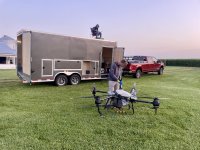5030
Epic Contributor
- Joined
- Feb 21, 2003
- Messages
- 28,967
- Location
- SE Michigan in the middle of nowhere
- Tractor
- Kubota M9000 HDCC3 M9000 HDC
Big machines = Big payments = big fuel cost = big notes = depressed crop prices. Fun to watch, not fun to pay for. Besides, Deere has made it extremely difficult for any producer to service their machines.Farmhand Mike filming the JD X9 in Indianan. 690 HP machine that can carry 460 bushels in its grain tank.
It's Indiana btw.
I don't believe you'll find anyone on here that has that caliber of equipment and certainly not the payment books that go with it either.

